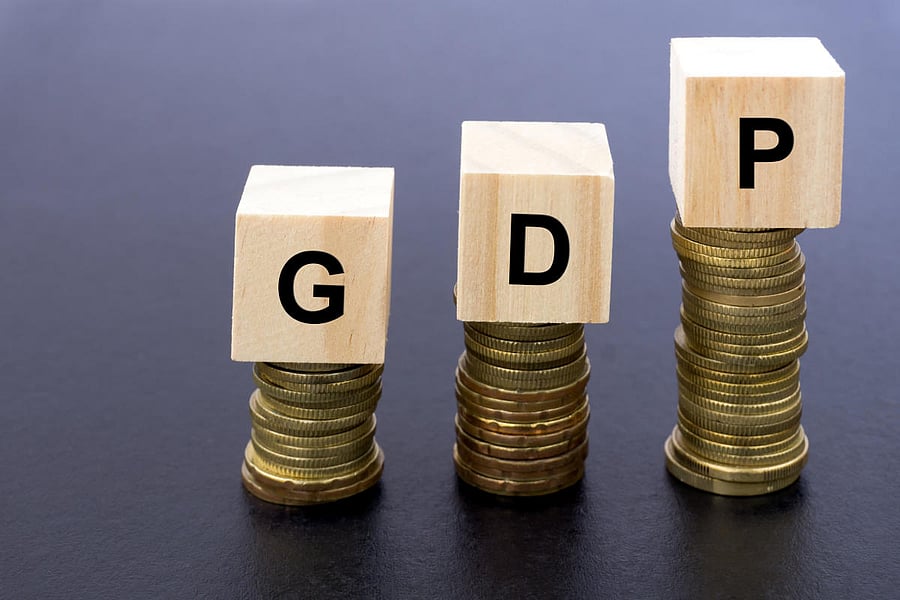
The official GDP data released for the first quarter of the financial year 2020 that shows shocking GDP growth rate at 5%, the lowest in the last six years, is a serious cause for concern about the prospects of the Indian economic growth trajectory.
The sharp decline of GDP from 7% in the July-September quarter of 2018-19 to 5% in April-June, 2019-20 is a stumbling block for the vision $5 trillion economy by 2024-25.
Doubling the economy from the current $2.8 trillion envisioned in the Union Budget 2019 is unrealistic given the structural weaknesses embedded in the economic growth. The Budget 2019 did not foresee the economic slowdown and requisite structural reforms to maintain the 8% growth rate. For the first time, the Central government candidly admitted that the economic downturn is unprecedented in the last 70 years.
The structural weaknesses in the economy are founded in the decelerating growth among the GDP variables where the rate of GDP = Consumption + Investment + Government +(Export – Imports).
The macroeconomic stability among these fundamentals is a prerequisite to reignite the economy on a strong footing. Consumption expenditure is one of the key macro-economic variables that play an indomitable role as it reflects the aggregate demand for various goods and services in the economy.
The official data shows that private final consumption expenditure as a percentage of GDP has declined by 2.69% from 59.3% to 57.7% in the last quarter (June) 2019. The CSO estimates show that private final consumption expenditure grows at a low rate of 3.1%.
The proportion of consumption expenditure squarely depends on the aggregate disposable income of the households of the economy and government consumption expenditure plays a diminutive role. An aggregate disposable income of private households is associated with the usual rate of employment generation in the economy. Insufficient demand is the source of unemployment or jobless growth in the economy.
The leaked NSSO data shows that an unemployment rate of 6.1% is the highest in 45 years and this reflects jobless growth in the country. Niti Aayog CEO Amitabh Kant candidly admitted that “probably we are not creating high-quality jobs” especially for youths. Unemployment is more conspicuous in urban areas with 7.8% whereas it is 5.3% in rural areas.
The unemployment among the youths aged 15-29 years is highest at 18.7% for men and 27.2 for women in urban areas and 17.4 for men and 13.6% for women in rural areas. Jobless growth is a reality and translated into decelerated households with aggregate demand and aggregate savings.
The gross saving rate to GDP has declined from 36.9% in 2011 to 30.5% in 2018 which is attributed to high rate of unemployment. Most importantly, the saving rates determine domestic investment in the economy which is holding back production. Investment - both domestic and foreign direct investment - propels the rate of economic growth and influences the productive capacity of the economy and long-run aggregate supply.
The trends in investment growth decelerated to 34.7% of the GDP in June 2019 from the peak of 41.2% in September 2011. The lowest record of investment was 29.5% in March 2017 coming after demonetisation.
The percentage of foreign direct investment to GDP nosedived from 1.6% in 2018 to 1.4% in 2019. This has impacted on the slowdown of gross capital formation as a percentage of GDP from 41.9% to 30.98% in 2018.
Investment as an aggregate measure of economic output largely impacted on the production and productivity of the economy in terms of GDP growth rate. The rate of GDP growth has also influenced government investment and spending. The government spending is lowest with 13.04% of GDP when compared to an average 15.14% during 1970-2017.
The Central government expenditure is reduced by 0.3% in 2018-19 when compared with 2017-18 which helped in reducing fiscal deficit to 3.4% of GDP and the debt to GDP ratio of 44.5%. This shows that the Budget 2019 did not foresee the recession which was already set in with the revision of GDP growth to 5.8% during January-march quarter.
Exports act as an engine of economic growth but high current account deficit at $15.8 billion shows import dependency, particularly huge imports of crude oil, and worsening of the rupee-dollar exchange rate which has touched Rs 72, further impoverishing balance of payment.
Productive capacity
The external debt increased by 2.6% and stands at 19.7% to GDP which burdened with high rate of interest paid. The prevailing instability in macroeconomic variables may not be considered as cyclical rather should be treated as structural. Both supply and demand-side management of the economy with effective fiscal and monetary policy is the need of the hour.
The fiscal policy of the government needs to stimulate the productive capacity of the economy and investment on job creation in the rural job scheme, small industry, economic and social infrastructure and industry is crucial. The windfall gain of Rs 1.76 lakh crore from the RBI provides a much-needed impetus to the government for aggressive spending in these sectors.
The monetary policy of the RBI has not yielded much result despite the repo rate being reduced to 5.4% owing to the ever-increasing non-performing assets in the banks and incapacity to repay loans caused by unemployment and prevailing sentiments about the economic recession.
The tax on personal income needs to be reviewed to drive the demand for goods and services. The rationalisation of GST can improve tax collection. Most importantly, when shocks occur to the economy, the animal spirits need to be restored among consumers and investors to reverse the economic downturn.
(The writer is Professor, Centre for Economic Studies and Policy, Institute for Social and Economic Change, Bengaluru)